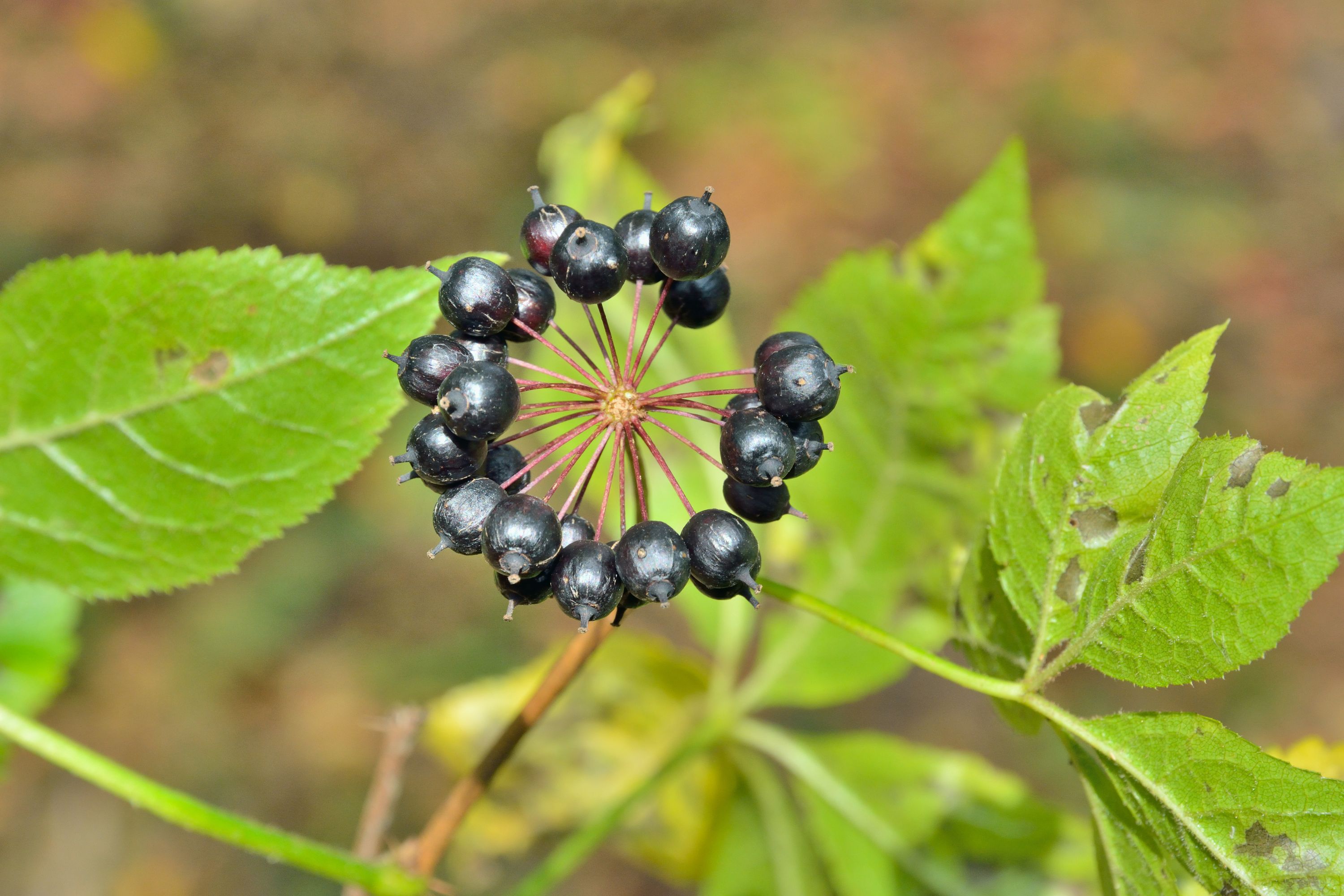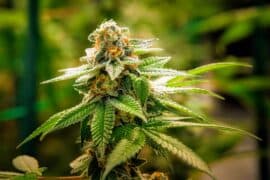Siberian ginseng
(Eleutherococcus senticosus)

Description
Eleutherococcus senticosus is a species of small, woody shrub in the family Araliaceae native to Northeastern Asia. It may be colloquially called devil's bush, Siberian ginseng, eleuthero, ciwujia, Devil's shrub, shigoka, touch-me-not, wild pepper, or kan jang. E. senticosus has a history of use in folklore and traditional Chinese medicine. Root extracts of E. senticosus are sold as a dietary supplement or cosmetic, usually under the name Siberian ginseng. The scientific name (genus), Eleutherococcus (from Greek) means "free-berried," and senticosus, (from Latin) means sentis (thorn-bush, briar), an adjective meaning "thorny" or "full of briers or thorns." It is not the same plant as American ginseng (Panax quinquefolius) or Asian ginseng (Panax ginseng). It has a diversity of common names across its range of distribution. The herb grows in mixed and coniferous mountain forests, forming low undergrowth or is found in groups in thickets and edges. Eleutherococcus senticosus is sometimes found in oak groves at the foot of cliffs, rarely in high forest riparian woodland. Its native habitat is East Asia, China, Japan, and Russia. E. senticosus is broadly tolerant of soils, growing in sandy, loamy, and heavy clay soils with acid, neutral, or alkaline chemistry and including soils of low nutritional value. It can tolerate sun or dappled shade and some degree of pollution. E. senticosus is a deciduous shrub growing to 2 metres (6.6 ft) at a slow rate. It is hardy to zone 3. It flowers in July in most habitats. The flowers are hermaphroditic and are pollinated by insects.
Taxonomic tree:







